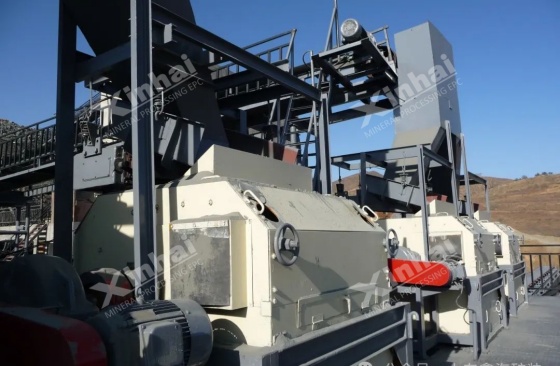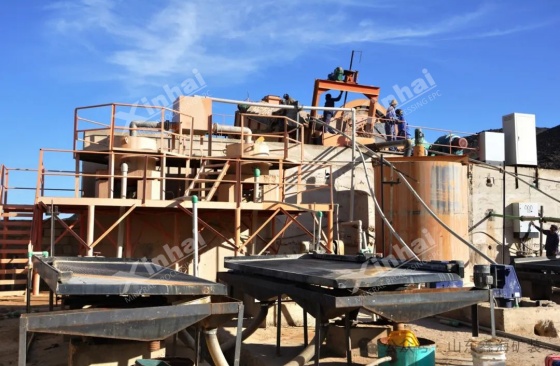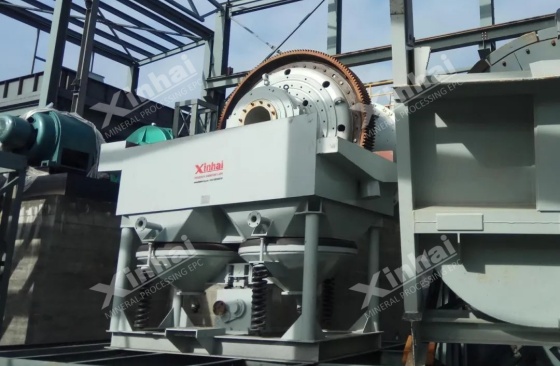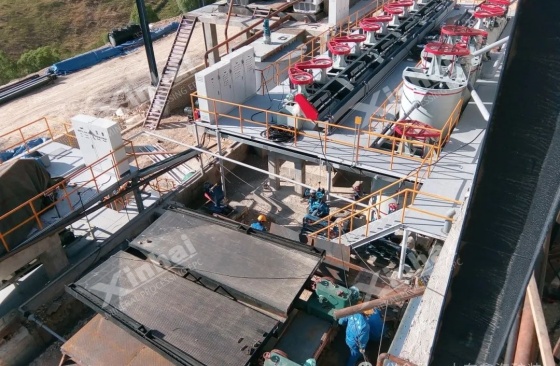If you want to know more information (such as product/process price, etc.), please contact us 24-hour telephone
As a cornerstone of the steel industry, iron ore is extensively used in steel production, machinery manufacturing, and related sectors.
Although more than 300 iron-bearing minerals have been identified in nature, only about 20 are considered viable as raw materials for ironmaking.
Based on their mineral composition, the major types of iron ore include magnetite, hematite, limonite, and siderite.
Due to the varying characteristics of different iron ores, beneficiation methods must be tailored and optimized according to the specific mineralogical and metallurgical properties of each ore type.

The main component of magnetite is ferroferric oxide (Fe₃O₄), with an iron content of approximately 72.36%. Magnetite appears black with cherry-red streaks, exhibits strong magnetism, has a hardness of 5.5–6.5, and a specific gravity of 4.6–5.2.
Depending on the mineral composition and dissemination characteristics of the ore, commonly used magnetite beneficiation processes can be categorized into three main types:
1. Single Weak Magnetic Separation Process
This method is suitable for single magnetite ore with a simple gangue composition and easy magnetic separation properties. It includes:
Continuous Grinding – Weak Magnetic Separation Process:
Based on the dissemination size of iron minerals, one or two stages of continuous grinding are employed. Once the ground product reaches the appropriate particle size, low-intensity magnetic separation is conducted to recover magnetite.
Stage Grinding – Weak Magnetic Separation Process:
This is suitable for low-grade magnetite ores with fine mineral dissemination. After the first grinding stage, magnetic roughing is performed to discard part of the tailings. The rough concentrate then undergoes a second grinding stage, followed by magnetic cleaning to improve concentrate grade.
2. Weak Magnetic Separation – Reverse Flotation Process
Applied when the iron concentrate grade is difficult to improve by magnetic separation alone and impurities such as SiO₂ remain high. Two typical process routes are used:
Magnetic Separation – Cationic Reverse Flotation Process
Magnetic Separation – Anionic Reverse Flotation Process
These processes effectively reduce gangue content and enhance the purity of iron concentrate.
3. Combined Beneficiation Processes
Used for treating complex polymetallic iron ores or mixed iron ores, where a single method is insufficient. Common flowsheets include:
Weak Magnetic Separation – Flotation Process
Weak Magnetic – Strong Magnetic Separation Process
Weak Magnetic – Strong Magnetic – Flotation Process
These combinations improve overall recovery rates and achieve better separation of iron and associated minerals.

The main component of hematite is ferric oxide (Fe₂O₃), with an iron content of 69.94%. It appears reddish-brown to steel gray or iron black, with cherry red to reddish-brown streaks, a hardness of 5.5–6.5, and a specific gravity of 4.8–5.3. Hematite is a weakly magnetic iron mineral.
Currently, commonly used beneficiation methods for hematite include gravity separation, magnetic separation, and flotation.
1. Gravity Separation
Gravity separation can be divided into fine-grained gravity separation and coarse-grained gravity separation, depending on the particle size of the embedded hematite:
Fine-grained gravity separation:
Suitable for hematite ores with fine dissemination and relatively high magnetic mineral content. The ore is first crushed and ground to achieve monomer dissociation, and then high-grade hematite concentrate is recovered using gravity separation equipment such as shaking tables or spiral chutes.
Coarse-grained gravity separation:
Applied to ores with coarsely embedded hematite. A "crushing without grinding" approach is generally adopted, and coarse tailings are directly discarded using gravity separation equipment.
2. Flotation
Flotation is used to recover weakly magnetic iron ores with fine to micron-sized particles, and is typically divided into:
Direct (positive) flotation: Suited for single hematite ores, where hematite is floated and gangue is depressed.
Reverse flotation: More commonly used when hematite is of high grade but the gangue minerals (e.g., quartz) are easily floatable.
Commonly used flotation reagents include:
Collectors: Animal and plant fatty acids (soaps), oxidized paraffin soaps, crude tall oil, chlorinated hydrocarbons, kerosene, sodium petroleum sulfonate
Depressants: Corn starch, dextrin, etc.
3. Combined Beneficiation Processes
Combined processes are used to treat complex hematite ores containing strongly magnetic minerals or non-metallic gangue minerals. Common flowsheets include:
Weak magnetic – strong magnetic separation process
Strong magnetic – flotation process
Strong magnetic – gravity separation process
Roasting – magnetic separation process
These processes improve separation efficiency and overall concentrate quality by addressing complex mineral associations.

Limonite is an iron oxide mineral containing crystal water, with an iron content ranging from 50% to 65%. It is characterized by low hardness, brittleness, a brown-yellow to dark brown color, and yellow-brown streaks. Limonite is a weakly magnetic mineral. Common beneficiation methods for limonite include gravity separation, magnetic separation, flotation, and combined process flows.
1. Gravity Separation:
Suitable for coarsely embedded limonite ores. The typical process involves ore washing (using equipment such as drum scrubbers or trommel screens) followed by separation using dense medium separators, jigs, or other gravity separation equipment.
2. Magnetic Separation:
Although limonite is only weakly magnetic, it can still be effectively recovered through strong magnetic separation, which is especially suitable for finely disseminated ores.
3. Flotation:
Suitable for fine-grained limonite. Common flows include direct (positive) flotation and reverse flotation. Desliming or enhanced dispersion of slimes is generally required prior to flotation to improve separation efficiency.
4. Combined Processes:
Used for ores with complex mineral compositions, uneven particle sizes, or high slime content. Typical flowsheets include gravity–strong magnetic separation, selective flocculation–flotation, and flocculation–strong magnetic separation.

Siderite mainly consists of ferrous carbonate (FeCO₃), with an iron content of 48.2%, a hardness of 3.5–4.0, a specific gravity of around 3.8, a brown-black to gray-black color, and white or pale red streaks. There are four commonly applied beneficiation methods:
1. Gravity Separation:
Suitable for coarse to medium-grained siderite ores. Typically involves dense medium separation and jigging.
2. Strong Magnetic Separation:
Effective for weakly magnetic siderite. Wet high-intensity magnetic separators (WHIMS) are used to process deslimed ore, significantly improving both concentrate grade and recovery rate.
3. Flotation:
Suitable for fine-grained siderite, and includes both direct (positive) and reverse flotation flows.
Direct flotation may involve acidic or alkaline systems.
Reverse flotation may use either anionic or cationic collectors depending on the gangue composition.
4. Magnetic Roasting–Weak Magnetic Separation:
Siderite is thermally transformed into strongly magnetic iron oxides, followed by recovery via weak magnetic separation.
Conclusion
Iron ores are highly variable in type and complexity. Different types of iron ores require tailored beneficiation processes. Therefore, scientific and rational process selection is critical. In actual production, it is essential to conduct comprehensive mineral processing tests to evaluate the ore's mineral composition, textural structure, particle size distribution, and selectivity. Based on the test report, combined with the mine’s specific conditions, production scale, and investment budget, a customized and efficient beneficiation solution should be developed.